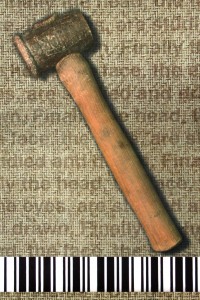 A selection from my photo series: Tools is reproduced in Itch Magazine. It’s an older series from the 90s, but Mehita Iqani was looking for work which addressed bar(codes). In the original version, viewers could actually use a bar code laser scanner to trigger audio snippets from a jumbled narrative.
A selection from my photo series: Tools is reproduced in Itch Magazine. It’s an older series from the 90s, but Mehita Iqani was looking for work which addressed bar(codes). In the original version, viewers could actually use a bar code laser scanner to trigger audio snippets from a jumbled narrative.
Uncategorized
Transmission Global Summit
This august sounding festival was the most recent public presentation of Tentacles 2.0. Thanks to the Canadian Film Centre for helping set that up!
Artist Statements
As a general form of inquiry, Michael Tweed and I have begun a blog to collect interesting or exemplary artist statements:
MediaCity 2010
TENTACLES 2.0 was exhibited last week at MediaCity, hosted at the Bauhaus University in Weimar, Germany. A great, convivial event. Michael Longford and I presented our paper on Large Screens and Small Screens: Public and Private Engagement with Urban Projections.
TRIO according to NOW Magazine
A nice summary of the installation at Nuit Blanche by Jordan Bimm of NOW Magazine:
Geoffrey Shea, one of two OCADU professors involved, takes on digital billboards with his interactive music projection piece TRIO. Revellers will be confronted by large projections of three folk musicians jamming, while corresponding audio tracks mix together to create a song. Viewers can dial a number on their mobile devices to change musicians in the trio – there’s a pool of nine, each with a different instrument – and create a new audio mix in the process.
Shea says he chose to showcase folk music because of its politics of participation and inclusion. “Folk was started by people who felt like they had something to say, who wanted to get involved. As a genre, it puts less emphasis on technique, and makes music more accessible.”
While it might seem contradictory to link folk music and high technology, Shea explains that the connection is all about art and democracy. “Everyone is getting creative with digital media these days, so I see media art as the new folk art.”
Shea hopes that groups of people dialing in to create the perfect trio onscreen will be drawn into a conversation about advertising, individual agency and mobile devices.
“We’re increasingly surrounded by large public screens, and I’m hoping that not all of these will be advertising. People should have access to them, be able to play with them and inject their own content. I want people to leave feeling empowered, and that they might want to try something like this on their own.”
Geoffrey Shea Wins the Twilio Developer Contest with Play: The Hertzian Collective
Congratulations to Geoffrey Shea, creator of Play: The Hertzian Collective, a musical sound game/toy created with projected video images and played collectively by viewers on their mobile phones.
For the past two weeks, we’ve run a developer contest category for phone controlled multi-player games, and among the fun submissions the Hertzian Collective struck us as the most unique and impressive installation.
What is Play: The Hertzian Collective?
Visual rhythms and a spoken text explore schoolyard games: the structured and unstructured play we invented as children. Arranged in three groups of overlapping, circular, video-projected images, rhythm sequences are controlled by viewers dialing a toll free phone number and selecting beats by pressing buttons on their keypad.
Inviting and participatory, structured something like a primitive musical instrument or an elaborate clockwork toy, visitors with mobile phones take control of some part of the action or another. Exploration quickly gives way to jamming and collaboration as each player realizes that they are sharing control with other viewers standing nearby. Continue reading
Interactive digital artwork premieres at Vancouver 2010 Cultural Olympiad
Larissa Kostoff at OCAD writes:
With slogans as compelling as With Glowing Hearts and Go World, it was hard not to get caught up in the excitement of the 2010 Olympic Winter Games — and that’s before you even factor in the athletes. Faculty of Art Assistant Professor Geoffrey Shea was in Vancouver, the city that had the eyes of the world on it last month, but he asked visitors to engage in a different kind of play via the 2010 Cultural Olympiad.
Shea’s interactive musical sound and video sculpture PLAY: The Hertzian Collective, ran from February 4 to February 21, 2010 in Vancouver. The sculpture, specially commissioned by organizers of the 2010 Olympic and Paralympic Winter Games, invited viewers to “play it” with their mobile devices.
PLAY: The Hertzian Collective was featured as part of the Olympiad’s multi-venue CODE Live program, which showcased digital technology-based artworks that champion participation, exploration and research. CODE was the 2010 Cultural Olympiad’s “Digital Edition,” developed to creatively engage national and global audiences through the creative use of digital technology.
The focus of Shea’s piece was serendipitous. “It just so happened that a significant aspect of the work I was doing had to do with play,” Shea explains, acknowledging the artwork’s unintentional complement to the spirit of the Games. Continue reading
Pathless Land
This solo exhibition was presented at the Durham Art Gallery in conjunction with the Fabulous Festival of Fringe Film. There’s a nice essay by Michael Tweed and even a video interview with a local reporter!
Fabulous Festival of Fringe Film
Rhythm and Rhyme at the Fab Fest
Rhythm and Rhyme: A program I curated for the Fabulous Festival of Fringe Film including works by Daniel Cockburn, Andrew Paterson, Benny Nemerofsky Ramsay, Dorion Berg and Barbara Sternberg…